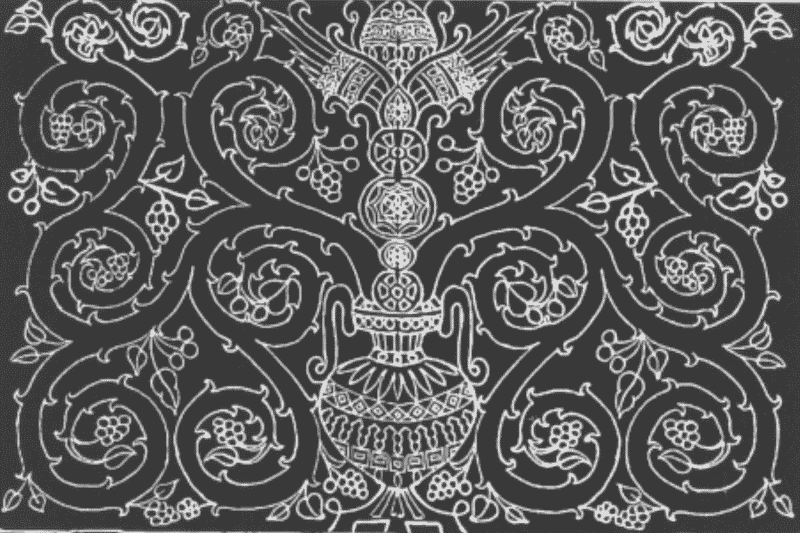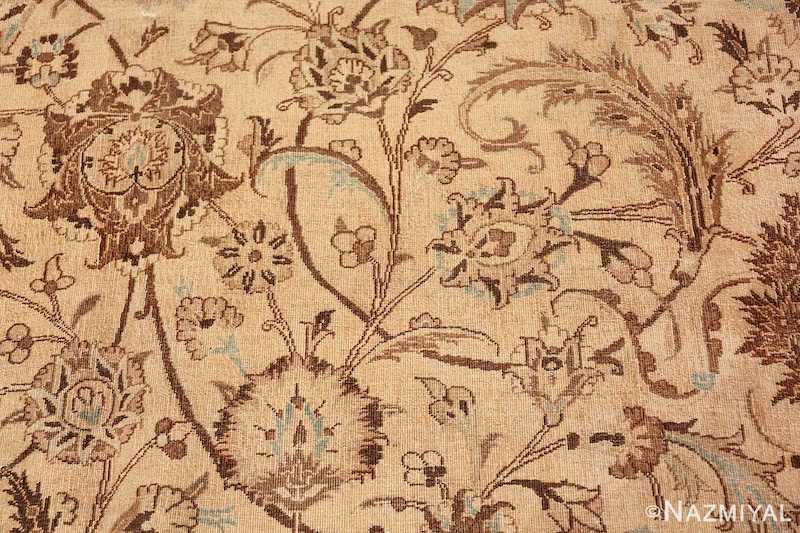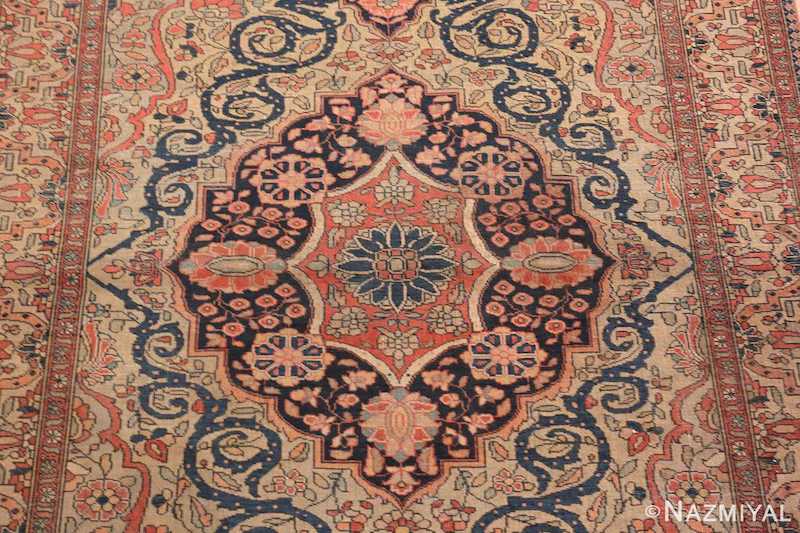Antique Rug Symbols: Islimi Arabesque Design
Meanings of Arabesque and Islimi Design in Antique Rugs and Carpets
Click Here to Go Back to List of Symbols
Islimi Design — Islimi, Also known as arabesque, is often used with major floral elements such as palmettes and the Shah Abassi motif.
Islimi are spiraling floral vines with a graceful curvature that connect major design elements, used in both the field and borders of a carpet. Islimi are seen in the Ardabil Carpet and are found in many styles of Persian rugs, particularly Nain, Isfahan and Mashhad.
Islimi is one of the three major aesthetic pillars of Islamic art, the other two being calligraphy and geometry. The Islimi motif is representative of the idea that there is an underlying order and unity to the natural world.
This idea is symbolized through the unbroken spiraling patterns and seemingly limitless branches connecting Islimi.

One example of the Islimi pattern, which can take many different forms.
Islimi and Arabesque Design Rugs
The Islamic world has produced many of the world’s most beautiful works of art. Islamic art is unique, largely due to its adherence to aniconism. Aniconism is the avoidance of portraying sentient beings like humans and animals in art. This is adhered to because many Islamic scholars believe representing sentient beings in art to be a form of idolatry which is forbidden in Islam.
This restriction has given way to a flourishing of art forms lacking beings in Islamic countries. There are three common styles of art in the Islamic world. One is calligraphy. Calligraphy involves morphing the Arabic script into beautiful works of art. This comes in many forms from simple word designs to ornate works resembling the silhouettes of animals. Geometric patterns are also used. This involves intricately woven geometric patterns used to make art of architecture, pottery, and many other items. The third is Islimi.
The symbol has many names: Arabesque, Islimi, biomorphic, but it all refers to the same thing. Essentially, Islimi involves creating art from patterns of foliage. However, there is more to it than that simple statement.

The Islimi design in a Persian rug.
The Principles of Islimi Art
While there are many styles of Islimi, there are certain aspects that tie it all together. These are categorized as three defining principles. The various motifs are designed to flow together smoothly. They illustrate the flow of life to represent the harmony of God’s creation.
There is an underlying structure to Islimi, the core of which being symmetry. The patterns and motifs are designed to be symmetrical and reflect across the artwork. This also represents harmony with the symmetry bringing two halves to unite as one. The tendrils and motifs come from a spiral in the form of foliage. The spiral flows from its source, moving onward softly and calmly.
These core principles are what makes Islimi art what it is. They are important both aesthetically and symbolically. On the surface, they result in beautiful works of art that flow harmoniously. Symbolically they represent many core tenets found in the Quran and in human culture generally.
History of Arabesque / Islimi
Arabesque is a word that vaguely means “in an Arab style”. Arabesque art is not always from Arab countries, but it does retain its general foundations. Arabesque art has a rich history predating Islamic times. The art style held a significance in the region long before Islam. When much of the region converted to Islam, they adapted the style to fit with the beliefs of Islam.
The art style is not only practiced in Islamic countries. Islamic countries came into contact with many other nations and cultures. The intermingling of cultures resulted in artists from each culture influencing others. Islimi inspired art can be found in many places. The Byzantines, Christians, Romans, and Chinese are among many who were inspired by Islimi and adapted it to their own works.
It is also worth remembering that the Islamic world is not a monolithic culture. From Turkey to Morocco and from Malaysia to the Persian Gulf, people of many cultures make up the Islamic world. The Persians have a rich cultural history that blended with Islamic culture. Islamic art in Morocco is blended with Berber, Spanish, and Mediterranean influences. All of these places create their own forms of Arabesque art.

Arabesque design in a Persian Kashan rug.
Motifs
As previously discussed, there are different styles employed by Islimi artists. The most common style is the Rumi style which largely comes from Turkish and Persian influence, but it is not the only. The varying styles of Islimi art are largely differentiated by their different motifs.
In Islimi, motifs can be thought of as individual pieces that are used to make up the overall pattern or artwork. They tend to be representations of foliage. The motifs used vary by region as artists create motifs to represent the foliage specific to their geographical region.
The motifs are woven together using the three core principles or symmetry, spiraling, and rhythm. They tessellate throughout the piece in ways that represent the vibrations of nature. They are worked throughout in ways that are both unique and intricate yet also harmonize as one piece.
Arabesque art is used in many ways. Architects use it in the designs of building. It can make up the patterns on pottery. Books use it for ornate headings and decoration. It is used to make textiles like rugs and carpets look beautiful. It is still used today to add life to rooms, buildings, and, well, lives.

